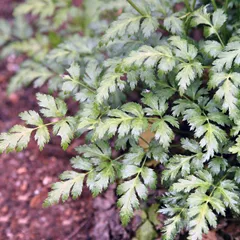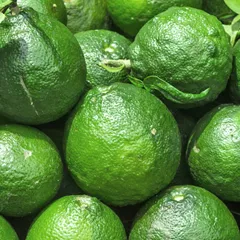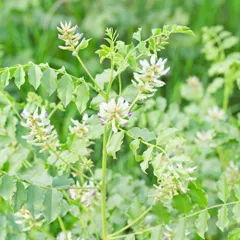Meningitis according to Chinese Medicine
The information provided here is not a replacement for a doctor. You shouldn't use it for the purpose of self-diagnosing or self-medicating but rather so you can have a more informed discussion with a professional TCM practitioner.
In Chinese Medicine, meningitis is sometimes associated with Heat invading the Pericardium, a so-called "patterns of disharmony". Chinese Medicine sees the body as a system, not a sum of isolated parts. A "pattern" is when the system's harmony is disrupted. It is not equivalent to the Western concept of "disease" because both concepts arise from totally different ways of seeing the human body.
To understand whether someone's meningitis might be caused by the pattern Heat invading the Pericardium, one needs to look for signs and symptoms associated with the pattern beyond what one might typically experience from meningitis alone. Indeed if meningitis is caused by Heat invading the Pericardium, patients also experience symptoms such as fever, irritability, restlnessness and general sensation of unease. Similarly, patients with Heat invading the Pericardium typically exhibit fine (Xi), rapid (Shu) or wiry (Xian) pulses as well as a reddish-purple tongue.
We've listed below a more detailed description of Heat invading the Pericardium so that you can have a better understanding of where meningitis might find its root according to Chinese Medicine.
Once identified, patterns are often treated using herbal formulas. Drinking herbal infusions is the most common remedy in Chinese Medicine, together with acupuncture. Here we detail below fourteen formulas that can help treat Heat invading the Pericardium.
Heat invading the Pericardium, a "pattern of disharmony" associated with meningitis

The Pericardium is a so-called "Zang" Organ. Learn more about the Pericardium in Chinese Medicine
Heat invading the Pericardium
Pulse type(s): Fine (Xi), Rapid (Shu), Wiry (Xian)
Tongue color: Reddish-Purple
Recommended herbal formula: Niu Huang Qing Xin Wan
Symptoms: Fever Irritability Restlnessness Delirious speech Impaired consciousness General sensation of unease
Meningitis might be due to Heat invading the Pericardium if the condition is paired with typical pattern symptoms such as fever, irritability, restlnessness and general sensation of unease. Similarly, patients with Heat invading the Pericardium typically exhibit fine (Xi), rapid (Shu) or wiry (Xian) pulses as well as a reddish-purple tongue.
The fourteen herbal formulas that might help with meningitis



The top herbs in Niu Huang Qing Xin Wan are Ox Gallstones (Niu Huang), Goldthread Rhizomes (Huang Lian) and Baikal Skullcap Roots (Huang Qin)
Niu Huang Qing Xin Wan
Source date: 1568 AD
Number of ingredients: 6 herbs
Key actions: Clears Heat and resolves Toxicity. Calms the Mind. Opens up the Orifices.
Why might Niu Huang Qing Xin Wan help with meningitis?
Because it is a formula often recommended to help treat Heat invading the Pericardium, a pattern sometimes associated with meningitis. If it looks like you might suffer from Heat invading the Pericardium, this formula might help (although please seek confirmation with a professional practitioner beforehand).



The top herbs in E Jiao Ji Zi Huang Tang are Donkey-Hide Gelatin (E Jiao), Chicken Egg Yolks (Ji Zi Huang) and Unprepared Rehmannia (Di Huang)
E Jiao Ji Zi Huang Tang
Source date: the Qing dynasty
Number of ingredients: 10 herbs
Key actions: Nourishes Yin. Nourishes Blood. Calms the Liver. Extinguishes Wind.
Why might E Jiao Ji Zi Huang Tang help with meningitis?
Because it is a formula often recommended to help treat , a pattern sometimes associated with meningitis. If it looks like you might suffer from , this formula might help (although please seek confirmation with a professional practitioner beforehand).



The top herbs in Qing Ying Tang are Water Buffalo Horns (Shui Niu Jiao), Ningpo Figwort Roots (Xuan Shen) and Unprepared Rehmannia (Di Huang)
Qing Ying Tang
Source date: 1798 AD
Number of ingredients: 9 herbs
Key actions: Clears the Nutritive level Heat. Relieves Fire Toxin. Removes Heat. Nourishes Yin.
Why might Qing Ying Tang help with meningitis?
Because it is a formula often recommended to help treat , a pattern sometimes associated with meningitis. If it looks like you might suffer from , this formula might help (although please seek confirmation with a professional practitioner beforehand).
Ling Jiao Gou Teng Tang
Source date: Qing dynasty
Number of ingredients: 10 herbs
Key actions: Cools the Liver. Extinguishes Wind. Increases Fluids. Relaxes the sinews.
Why might Ling Jiao Gou Teng Tang help with meningitis?
Because it is a formula often recommended to help treat , a pattern sometimes associated with meningitis. If it looks like you might suffer from , this formula might help (although please seek confirmation with a professional practitioner beforehand).



The top herbs in Yin Qiao San are Honeysuckle Flowers (Jin Yin Hua), Forsythia Fruits (Lian Qiao) and Platycodon Roots (Jie Geng)
Yin Qiao San
Source date: 1798 AD
Number of ingredients: 10 herbs
Key actions: Disperses Wind Heat. Clears Heat. Resolves Toxicity.
Why might Yin Qiao San help with meningitis?
Because it is a formula often recommended to help treat , a pattern sometimes associated with meningitis. If it looks like you might suffer from , this formula might help (although please seek confirmation with a professional practitioner beforehand).



The top herbs in Bai Hu Tang are Gypsum (Shi Gao), Anemarrhena Rhizomes (Zhi Mu) and Liquorice (Gan Cao)
Bai Hu Tang
Source date: 220 AD
Number of ingredients: 4 herbs
Key actions: Clears Qi-level Heat. Drains Stomach Fire. Generates fluids. Alleviates thirst.
Why might Bai Hu Tang help with meningitis?
Because it is a formula often recommended to help treat , a pattern sometimes associated with meningitis. If it looks like you might suffer from , this formula might help (although please seek confirmation with a professional practitioner beforehand).



The top herbs in Huang Lian Jie Du Tang are Goldthread Rhizomes (Huang Lian), Baikal Skullcap Roots (Huang Qin) and Phellodendron Bark (Huang Bo)
Huang Lian Jie Du Tang
Why might Huang Lian Jie Du Tang help with meningitis?
Because it is a formula often recommended to help treat , a pattern sometimes associated with meningitis. If it looks like you might suffer from , this formula might help (although please seek confirmation with a professional practitioner beforehand).



The top herbs in Huang Long Tang are Rhubarb (Da Huang), Mirabilites (Mang Xiao) and Immature Bitter Oranges (Zhi Shi)
Huang Long Tang
Source date: 1445 AD
Number of ingredients: 10 herbs
Key actions: Clear Heat from the Interior . Supports the Original Qi.
Why might Huang Long Tang help with meningitis?
Because it is a formula often recommended to help treat , a pattern sometimes associated with meningitis. If it looks like you might suffer from , this formula might help (although please seek confirmation with a professional practitioner beforehand).



The top herbs in Chai Hu Gui Jiang Tang are Bupleurum Roots (Chai Hu), Cinnamon Twigs (Gui Zhi) and Baikal Skullcap Roots (Huang Qin)
Chai Hu Gui Jiang Tang
Source date: 220 AD
Number of ingredients: 7 herbs
Key actions: Harmonizes and releases the Lesser Yang. Removes Stagnation . Warms the Interior. Dispels Cold.
Why might Chai Hu Gui Jiang Tang help with meningitis?
Because it is a formula often recommended to help treat , a pattern sometimes associated with meningitis. If it looks like you might suffer from , this formula might help (although please seek confirmation with a professional practitioner beforehand).



The top herbs in Zhu Ye Shi Gao Tang are Gypsum (Shi Gao), Lophatherum Herbs (Dan Zhu Ye) and Ginseng (Ren Shen)
Zhu Ye Shi Gao Tang
Source date: 220 AD
Number of ingredients: 7 herbs
Key actions: Clears Heat. Generates Body Fluids. Strengthens and regulates Qi.
Why might Zhu Ye Shi Gao Tang help with meningitis?
Because it is a formula often recommended to help treat , a pattern sometimes associated with meningitis. If it looks like you might suffer from , this formula might help (although please seek confirmation with a professional practitioner beforehand).
Huang Lian Jiao Du Tang
Why might Huang Lian Jiao Du Tang help with meningitis?
Because it is a formula often recommended to help treat , a pattern sometimes associated with meningitis. If it looks like you might suffer from , this formula might help (although please seek confirmation with a professional practitioner beforehand).



The top herbs in Qing Wen Bai Du Yin are Gypsum (Shi Gao), Anemarrhena Rhizomes (Zhi Mu) and Unprepared Rehmannia (Di Huang)
Qing Wen Bai Du Yin
Source date: 1794 AD
Number of ingredients: 14 herbs
Key actions: Drains Fire. Resolves Toxicity. Dries Dampness.
Why might Qing Wen Bai Du Yin help with meningitis?
Because it is a formula often recommended to help treat , a pattern sometimes associated with meningitis. If it looks like you might suffer from , this formula might help (although please seek confirmation with a professional practitioner beforehand).



The top herbs in Qing Gong Tang are Ningpo Figwort Roots (Xuan Shen), Water Buffalo Horns (Shui Niu Jiao) and Dwarf Lilyturf Roots (Mai Dong)
Qing Gong Tang
Source date: 1798 AD
Number of ingredients: 6 herbs
Key actions: Clears Heat in the Heart. Nourishes the Yin Fluids .
Why might Qing Gong Tang help with meningitis?
Because it is a formula often recommended to help treat , a pattern sometimes associated with meningitis. If it looks like you might suffer from , this formula might help (although please seek confirmation with a professional practitioner beforehand).



The top herbs in Xiao Cheng Qi Tang are Rhubarb (Da Huang), Houpu Magnolia Bark (Hou Pu) and Immature Bitter Oranges (Zhi Shi)
Xiao Cheng Qi Tang
Source date: 220 AD
Number of ingredients: 3 herbs
Key actions: Moderately purges Heat accumulation. Circulates Qi in the Middle .
Why might Xiao Cheng Qi Tang help with meningitis?
Because it is a formula often recommended to help treat , a pattern sometimes associated with meningitis. If it looks like you might suffer from , this formula might help (although please seek confirmation with a professional practitioner beforehand).
Symptoms related to meningitis
Fever Irritability Restlnessness General sensation of unease Delirious speech Impaired consciousness









